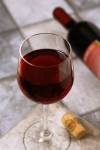Articles on this wine research recommend that serving cheap wine in fancy bottles or reaching for bottom shelf wine. Does that mean you should constantly deceive yourself into enjoying cheap wine? Or never spend more than $10 since we often mistake $10 bottles with $100 bottles? In that case, will you never spend over $10 on sushi for same reason? Or never spend over $30 at a fancy restaurant because the ambiance often tricks people into thinking a simple chicken dish is fancy?
 Ordinary consumers don’t think hard and deliberately when sipping wine over a conversation with friends or listening to a concert. Even when thinking deliberatively, overcoming our intuitive impressions is difficult for experts and amateurs alike. This article has referred to the influence of price tags and context on products and experiences like wine and classical music concerts as tricks that skew our perception. But maybe we should consider them a real, actual part of the quality.
Ordinary consumers don’t think hard and deliberately when sipping wine over a conversation with friends or listening to a concert. Even when thinking deliberatively, overcoming our intuitive impressions is difficult for experts and amateurs alike. This article has referred to the influence of price tags and context on products and experiences like wine and classical music concerts as tricks that skew our perception. But maybe we should consider them a real, actual part of the quality.
What does this all say about wine snobs? The answer is just as unclear. Due to the way that appreciation of wine, fancy food, and other aspects of high culture is often used to police class lines, studies demonstrating the limitations of expert judgment in these areas become fodder for class warfare and takedowns of wine snobs.
That’s fair. Many boorish people talking about the ethereal qualities of great wine probably can’t even identify cork taint because their impressions are dominated by the price tag and the wine label. But the classic defense of wine – that you need to study it to appreciate it – is also vindicated by Master Sommeliers. The open question – which is both editorial and empiric – is what it means for the industry that constant vigilance and substantial study is needed to dependably appreciate wine for the product quality alone. But the questions is relevant to the enjoyment of many other products and experiences that we enjoy in life
via The Science of Snobbery.
Like this:
Like Loading...


 Do you know what you were really drinking last night? The dirty secret about wine is that it frequently contains wood chips, chemicals, and something called Mega Purple.
Do you know what you were really drinking last night? The dirty secret about wine is that it frequently contains wood chips, chemicals, and something called Mega Purple.